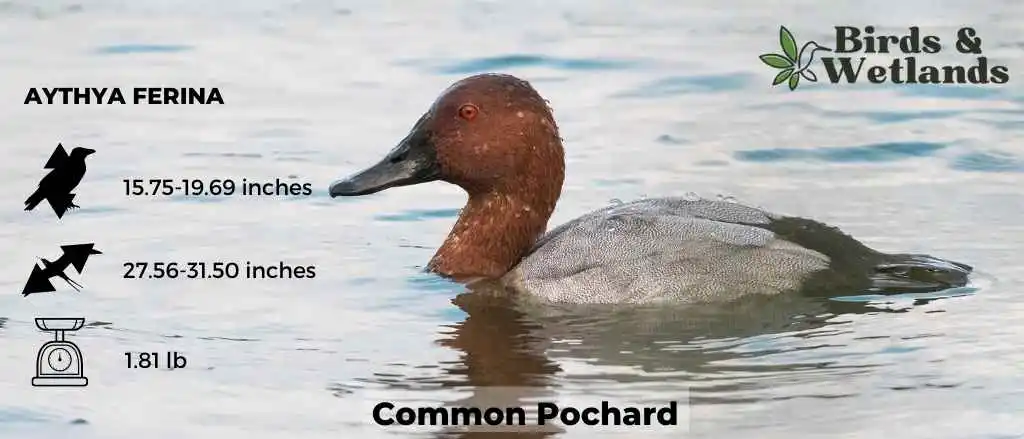
The common pochard (Aythya ferina) is a diving duck found across much of the Old World. It is native to temperate regions, from northern and eastern Europe to western and central Asia. This species has also been introduced to New Zealand and Australia.
This diving duck is a medium-sized waterfowl, measuring between 40 to 50 cm long with a wingspan of 70 to 80 cm. It is slightly larger than other species of ducks of similar body shape, such as ring-necked ducks, but smaller than common eiders or lesser scaup.
Common pochards belong to the Aythyini tribe within the Aves order’s Anatidae family, along with other close relatives such as ring-necked ducks, redheads and scaups.
Scientific Name: Aythya ferina
Height: 40-50 cm
Wingspan: 70-80 cm
Weight: 820 g
Physical Description
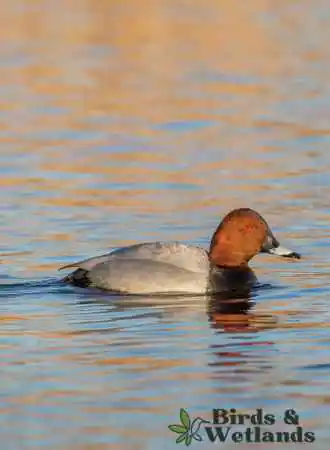
The adult male common pochard has a physical appearance characterized by a pale gray body with a black rump, tail, and breast.
Its upperwing coverts are dark gray, with paler flight feathers. The primaries and secondaries are silver-gray with dark tips. The underwing is white.
The head of the adult male is rufous-chestnut in color, with a slightly concave profile that leads to a peaked crown. It has a broad, dark gray bill with a pale gray band and black tip. The eyes of the adult male common pochard are bright orange-red.
The adult female common pochard is a medium-sized diving duck with a greyish body and darker upper parts. It has a dull brown head with a dark crown, pale gray cheeks, throat, and eye stripe. The bill is blackish with a pale gray band and a black tip, and the eyes are brown.
Listen to the Common Pochard
Habitat & Range
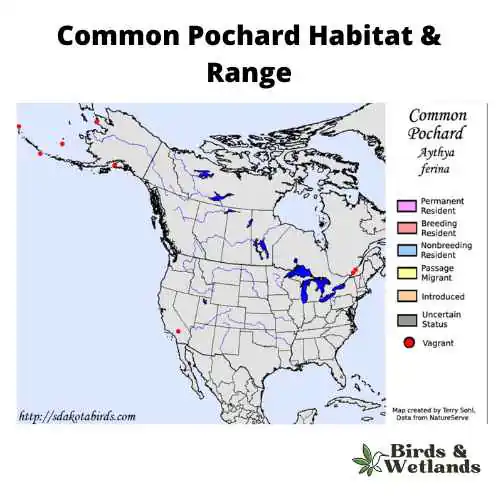
The common pochard breeds in temperate areas in Europe and parts of Asia. During breeding, they need nesting sites with dense covers and emergent vegetation near rivers, marshes, freshwater lakes, and ponds.
Large numbers of common pochards are dispersed across the British Isles, with small breeding populations in eastern England, lowland Scotland, and Ireland. Small flocks breeding in Russia and Scandanavia overwinter in some parts of Great Britain.
The rest of the year, they like open bodies of water like lakes, reservoirs, slow-moving rivers, and places near the coast like bays and estuaries.
These diving ducks are rare vagrants in North America, with sightings confined to a small area in the Aleutian Islands and western Alaska.
Feeding Habits & Diet
The common pochard is a social bird that often feeds in small groups or large flocks. Its diet consists mostly of roots, seeds, sedges, and aquatic plants. It also occasionally eats small invertebrates, aquatic insects, bugs, larvae, small mollusks, snails, crustaceans, amphibians, and fish for protein.
As a diving duck, the common pochard can dive underwater to a depth of about 2.5 meters to find food. In shallow waters, it may also dabble or upend to forage on the water’s surface. On land, it uses its bill to sift through mud for insects.
Nesting & Mating Habits
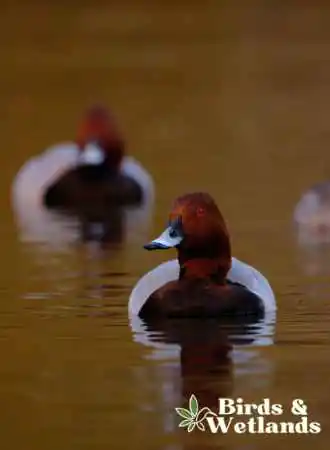
The breeding season for common pochards varies depending on location. Generally, it occurs between mid-April and June in their northern breeding range, with a slightly later start in southern areas.
The common pochard typically builds its nest on the ground in shallow depressions among vegetation. These nests are made of grass, reed stems, leaves, and down and may be partially built over water.
The female lays 8-10 pale greenish-grey eggs, which may be vulnerable to parasitism. The incubation period is 24-28 days, and once the eggs hatch, the chicks are brown on top and yellow on the underside.
In most cases, both parents participate in raising the chicks, with male pochards sometimes staying at the nest site while the females molt. Some males may abandon the females to molt with other males.
After about 50-55 days, the chicks fledge and become independent birds.
Threats & Conservation
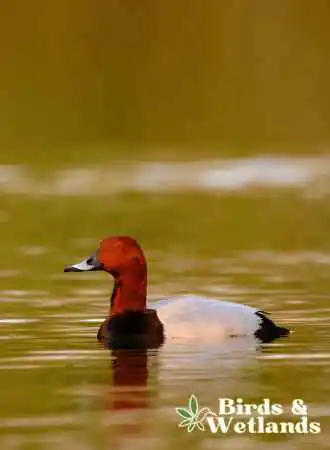
Despite having a wide range in the breeding season and winter, the common pochard is currently listed as Vulnerable due to the severe threats it faces, including the loss of its breeding habitat caused by the drainage of wetlands for agricultural expansion and being hunted by wildlife hunters.
Key Points
- The common pochard is a bird species with a black breast, whitish body, red head and bright red eyes.
- These birds are omnivores, feeding on small animals and plants.
- These birds occur throughout the Palearctic and much of Eurasia.
